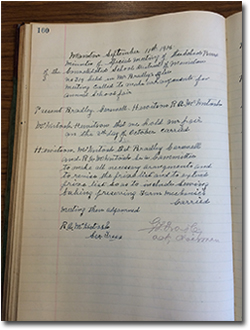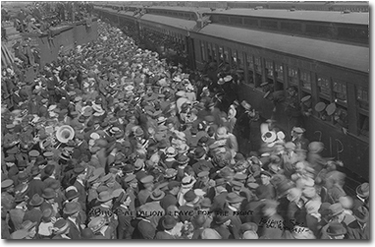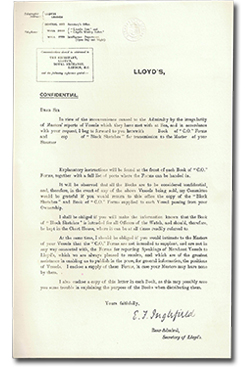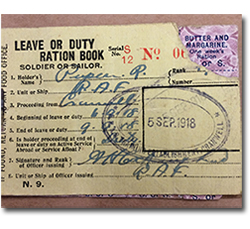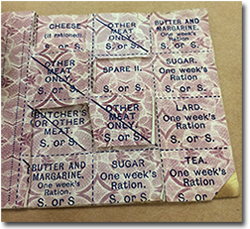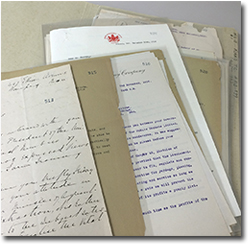The 100th anniversary of the First World War is now finished but the records will continue to be preserved at the Archives and accessible to current and future generations who want to know more about the time period. In addition, this blog will remain on our website as an additional resource.
August 2015 Posts:
- 31 August: Back to School, 1915
- 24 August: 28th Battalion Leave for the Front
- 17 August: Intelligence-Gathering at Sea
- 10 August: First World War Ration Booklet
- 4 August: A Day in the Conservation Lab: Stabilizing Brittle Papers from 100 Years Ago
31 August 2015
Back to School, 1915
As war waged on in Europe, much of life and routine went on as normal at home in Manitoba. Enrollment in Manitoba schools was growing and new schools were being built.
The Archives of Manitoba has a variety of records related to Manitoba schools, dating back to the early days of the province, and including the First World War time period. School records include daily registers, minute books and cash books. Records of the Department of Education from this time period include reports from school trustees and school inspectors.
Pages from two different school records are shown here.
The minutes from the Manitou School District for 11 September 1915 show that arrangements were being made for the annual school fair to be held on the 8th of October. The minutes show that the committee was “to make all necessary arrangements and to revise the prize list and to extend prize list so as to include sewing, baking, preserving, farm mechanics.”
This image shows the list of expenditures for the Willow Bluff School District for 1914-1915. Total expenditures were $852.80 and show $60 monthly salary payments to the teacher, Miss Graham.
Search Tip: Search Keystone using keywords like “school” and limiting your search by years to find more records related to schools and education in Manitoba during the First World War.
Feedback (0)
E-mail us at [email protected] with a comment about this blog post. Your comments may be included on this page.
24 August 2015
28th Battalion Leave for the Front
Photograph: “28th Battalion leave for the front.” This photograph was taken in 1915 in Winnipeg by Advance Fotos, 341 Portage Avenue.
Archives of Manitoba, Edith Rogers fonds,
28th Battalion leave for the front, [1915], C45 photo 79.
Feedback (0)
E-mail us at [email protected] with a comment about this blog post. Your comments may be included on this page.
17 August 2015
Intelligence-Gathering at Sea
As it conducted its war-time shipping operations in Europe, the Hudson’s Bay Company’s fleet of hundreds of ships was ever at the mercy of the skies and seas. Enemy vessels proved a more ominous threat. Attacks by enemy ships along transport routes were a genuine danger for HBC’s merchant vessels, as is clear from various lists of ships “sunk by enemy action” found amongst HBC records.
A chief concern of HBC, then, was to safeguard its assets at sea. Lloyd’s of London, an insurance specialist, also had a vested interest in making sure that captains and crews remained vigilant as they navigated the seas. The following documents, found among the records of HBC’s wartime business operations, were meant to be circulated to captains of vessels on behalf of Lloyd’s. They communicate a need for captains to report sightings of all vessels spotted at sea and request that the accompanying “block sketches” and “C.O. forms” be utilized to document and relay the information. Such intelligence was considered vital to the “assurance of a vessel’s safety”.
Hudson’s Bay Company Archives, Archives of Manitoba, Miscellaneous records from Hudson’s Bay Company’s wartime business with European governments, Circular letter from the Secretary, Lloyd’s, in connection with “Block Sketches of War and Merchant Vessels”; supplementary sheet, April 1915 (HBCA RG22/29/20).
Search Tip: To find related correspondence, search Keystone with the keywords “Miscellaneous records from Hudson’s Bay Company’s wartime business with European governments.”
Feedback (0)
E-mail us at [email protected] with a comment about this blog post. Your comments may be included on this page.
10 August 2015
First World War Ration Booklet
This ration booklet was issued to [R. Papen] in 1918. (The handwriting is difficult to read and R. Papen is our best guess!) The booklet contains removable coupons designated for rations of meat, tea, butter and other foodstuffs supplied to soldiers at the front. Only some of the coupons were removed and used.
The Archives has received several small donations of items related to the First World War. This ration booklet was donated in 1970 with little accompanying information. We do not have any further information about R. Papen and we do not know whether or not he had a connection to Manitoba or even to Canada.
Search Tip: Search “First World War ration booklet” in Keystone for more information.
Feedback (0)
E-mail us at [email protected] with a comment about this blog post. Your comments may be included on this page.
4 August 2015
A Day in the Conservation Lab: Stabilizing Brittle Papers from 100 Years Ago
Conservators recently looked at letters from the office of T. C. Norris, Premier of Manitoba from 1915 to 1922. The file includes letters sent to the Premier and copies of the Premier’s letters back. The letters sent to the Premier’s office were written by hand or typed on good quality paper. Even though they are now a hundred years old, these have lasted well over time, keeping their colour and flexibility. The copies that were made of the Premier’s outgoing letters, however, were on poor quality paper and they have become dark and brittle. (Perhaps the government was trying to save money on paper during the war?)
These brittle pages have now been put into stable plastic protectors to prevent further damage. We suggest this approach for protecting personal collections as well. Look for photograph or page protectors that are of “archival” quality. Stay away from vinyl (PVC). The best quality protectors have passed the PAT (Photographic Activity Test).
These photographs show the brittle pages found in the file of T.C. Norris correspondence.
(Archives of Manitoba, Premierís office files, EC 0016, GR1665).
Search Tip: The letters of T.C. Norris have been featured in two previous blogs, 19 May 2015 and 22 June 2015 . This file of records is in the process of being digitized and will be available on the Keystone database in the near future. The originals – now sleeved! – can be requested for viewing in the Archives Research Room. Search “Premierís office files, EC 0016, GR1665” in Keystone to find out more.
Feedback (0)
E-mail us at [email protected] with a comment about this blog post. Your comments may be included on this page.



